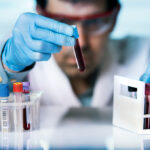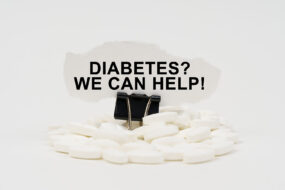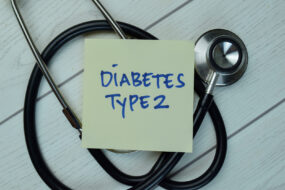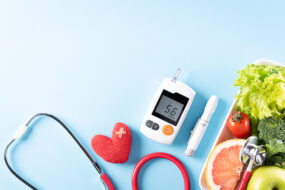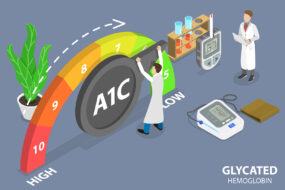
Table of Contents
What is Hyperglycemia?
If you suffer from diabetes, you may be wondering what hyperglycemia is. This article will cover the causes of hyperglycemia, how to detect it, and how to treat it. If you're concerned about your blood sugar level, check out our tips to help you keep track of your levels. Then, read on for more information. Hyperglycemia symptoms may also occur without any warning. Fortunately, there are several ways to avoid them.
Symptoms
If your blood sugar is too high, you may experience some of these common symptoms. Depending on the level, hyperglycemia may cause numbness or tingling in your fingers and toes, dry/itchy skin, and wounds that are slow to heal. In rare cases, hyperglycemia may also cause autonomic neuropathy, a type of neuropathy that affects automatic body processes. Hyperglycemia may even lead to diabetic neuropathy.
Some people do not experience the effects of hyperglycemia until their blood sugar is elevated enough to be dangerous. Regular checks of blood glucose levels are essential to avoid the complications of hyperglycemia. It is also important to note that some people experience regular episodes of high blood sugar in the early morning hours, particularly between 3 and 8 a.m., before eating. This phenomenon is known as the dawn phenomenon and researchers recommend monitoring blood glucose levels during this time.
If you have a fasting glucose level of over 125 mg/dL, you may be suffering from diabetes. While people often associate hyperglycemia with type 2 diabetes, this condition is often associated with other conditions. You should know that there are other causes of high blood sugar, including pregnancy, high blood pressure, and low body weight. You should always aim to stay within a certain range when testing your glucose level.
In some cases, an elevated blood sugar level may be a temporary event and will disappear on its own. If you notice these symptoms, drink extra water and take your prescribed medications. If the symptoms persist, call your healthcare team to discuss your situation. Your treatment may need to be adjusted to address other medical conditions. So, don't wait to seek medical treatment. Keep yourself hydrated. Drink about two or three quarts of water every 24 hours to avoid the symptoms of hyperglycemia.
When your blood sugar is too high, you should immediately make an appointment with your GP or care team. Be sure to bring a record of your blood sugar levels and your current medication. If you notice ketones in your urine, consult your doctor and get a blood test to check for diabetic ketoacidosis. If your blood sugar is too high for a fast blood glucose test, you may be suffering from diabetic ketoacidosis, which is a very serious complication of diabetes.
Causes
If you're experiencing high blood sugar, you might want to know what can trigger it. Some causes of high blood sugar are hereditary, and others are temporary, such as an infection. Other causes are a result of a disease, such as diabetes or polycystic ovary syndrome, which can cause infertility. Regardless of the cause, the important thing to remember is that eating the right foods can regulate your blood sugar levels.
The authors examined the cause of hyperglycemia and hypoglycemia in adult medical and surgical inpatients. They analyzed data from blood glucose printouts and interviews with hospital staff and medical professionals. After identifying events, they determined the causes within 24 hours. They then assessed preventability and their effectiveness. The findings were reported to an expert panel who rated the prevalence and causes of these conditions. This article provides an overview of the most common causes of hyperglycemia and hypoglycemia.
In the kidneys, hyperglycemia affects the glomerular proteins. Glycemia causes glomerular basement membrane thickening and mesangial cell proliferation. It can also damage vascular endothelial cells. In dogs, hyperglycemia can lead to retinopathy and nephropathy. However, it's possible to treat hyperglycemia.
The most common causes of hyperglycemia include diabetic ketoacidosis (DKA) and nonketotic hyperosmolar coma. In diabetes, the levels of both can exceed 250 mg/dL. When blood glucose levels become dangerously high, insulin fails to push glucose into cells and the body starts using fatty acids to create energy. This results in accumulation of ketones in the blood. This acidosis can lead to severe hypotension, coma, or even death.
Acute or chronic stress may cause hyperglycemia in dogs. The body releases epinephrine or corticosteroids to combat the stress of an emergency situation. Corticosteroids cause a sustained rise in blood glucose that can persist for days. In an experiment, a single intravenous injection of epinephrine increased glucose concentration from 50 to 140 mg/dL in 15 minutes. However, the concentration did not remain above this level for two hours.
Treatment
Treatment of hyperglycemia involves managing the symptoms and reducing the risk of long-term complications. This may involve a combination of oral medications and dietary changes. Patients with Type 2 diabetes should consult an endocrinologist for additional treatment options. For patients suffering from hyperglycemia, psychotherapy is a good way to deal with underlying problems and reduce the risk of hyperglycemia. In some cases, hyperglycemia is caused by a psychological disorder called diabetes distress.
People with hyperglycemia should avoid high-calorie and high-fat foods. The presence of these foods increases the risk of infections, and high blood glucose levels can lead to a variety of health complications. One treatment option for diabetes is metformin. This medication helps to delay the gastric emptying, which reduces blood sugar levels. Patients with diabetes who are overweight can use metformin to control their blood sugar and potentially reduce their insulin dose. The ADA algorithm takes into account several factors in recommending the best insulin dosages and drugs for people with hyperglycemia.
Inpatient hyperglycemia is common and is associated with higher mortality and healthcare resource utilization. However, patients without diabetes may be at risk of developing hypoglycemia, a condition that can be fatal. Thus, improved glycemic control can reduce hospital complications and in-hospital mortality. However, a recent study found that intensive glycemic therapy may lead to increased risk of hypoglycemia and a higher risk of serious infections. The increased risk of hypoglycemia and its complication profile have led to the development of new alternative treatments for hyperglycemia.
Treatment for drug-induced hyperglycemia focuses on reducing blood sugar levels within the target range. In this way, patients can avoid the acute complications of diabetes, diabetic ketoacidosis, and long-term consequences of hyperglycemia. The risks of hyperglycemia must be carefully evaluated as well as patient risk factors. Treatment should be directed towards preventing hypoglycemia. Patients who have hypoglycemia should be monitored to determine whether they need additional treatment.
The effects of hyperglycemia treatment are multi-faceted and depend on patient response to the therapy. In patients with critical injuries, moderate insulin regimens have been found to be the most effective. In this case, insulin treatment should be given within target ranges within the first few days after an accident or injury. In addition, future prospective randomized trials should focus on the frequency of hypoglycemia and the extent of glucose variability, as well as the effect of insulin in critically injured patients.
Prevention
Preventing hyperglycemia can be as simple as changing your eating habits. The best way to do this is to choose whole grains over highly processed carbohydrates. Also, limit the amount of time you spend sitting or lying down. Those who have diabetes should aim to walk for at least 30 minutes each day. Avoiding sugary foods is another way to avoid hyperglycemia. Eating more fruits and vegetables is a great way to improve blood glucose levels.
Stress is a known cause of hyperglycemia. It is a temporary rise in blood sugar that subsides when the stressful condition passes. According to the American Diabetes Association and the American Association of Clinical Endocrinologists, stress hyperglycemia is defined as a transient increase in plasma glucose during a period of time (fasting or random) that is two hours or longer. The most common causes of hyperglycemia in children include trauma, febrile infections, and seizures.
A medical ID can be a good way to identify yourself. These bracelets or necklaces usually contain basic health information. Some models feature a compact USB drive with a complete medical history. Good diabetes management is crucial for prevention of hyperglycemia. It is also recommended to enroll in the free Living With Type 2 diabetes program to get support during the first year. This program can help you understand your condition and your symptoms so that you can take appropriate action.
To prevent heart failure, one way to do this is to inhibit myocardial apoptosis. This process can be delayed by preventing hyperglycemia in the first place. If hyperglycemia is prevented, the heart may be able to produce more insulin. Aside from preventing heart failure, it also preserves the expression of the genes responsible for insulin secretion. If diabetes is prevented early enough, it can improve the quality of life for both the patient and the doctor.





